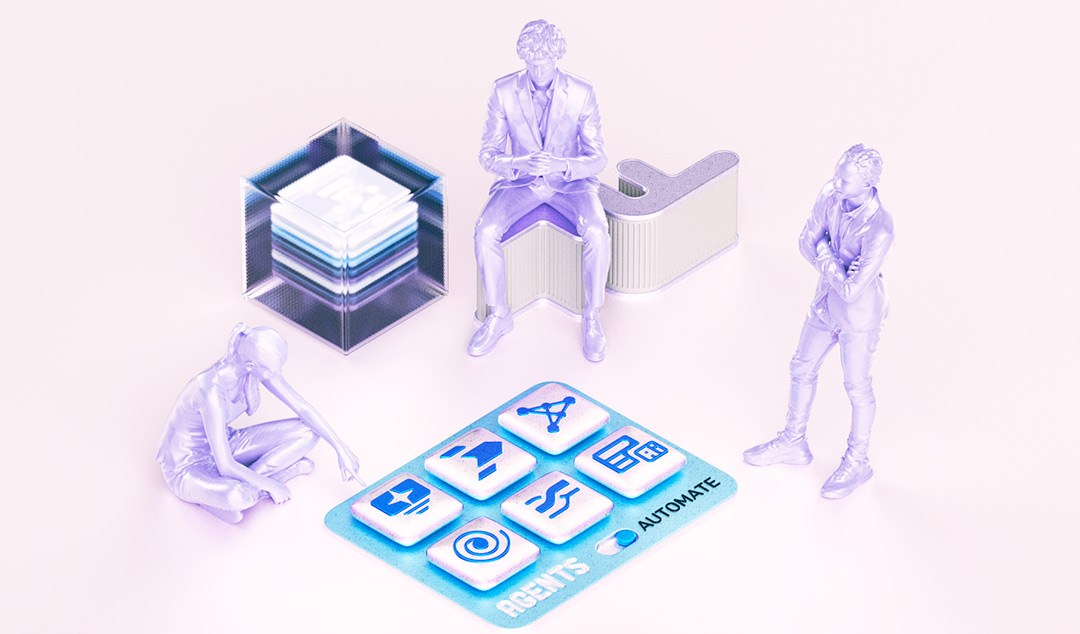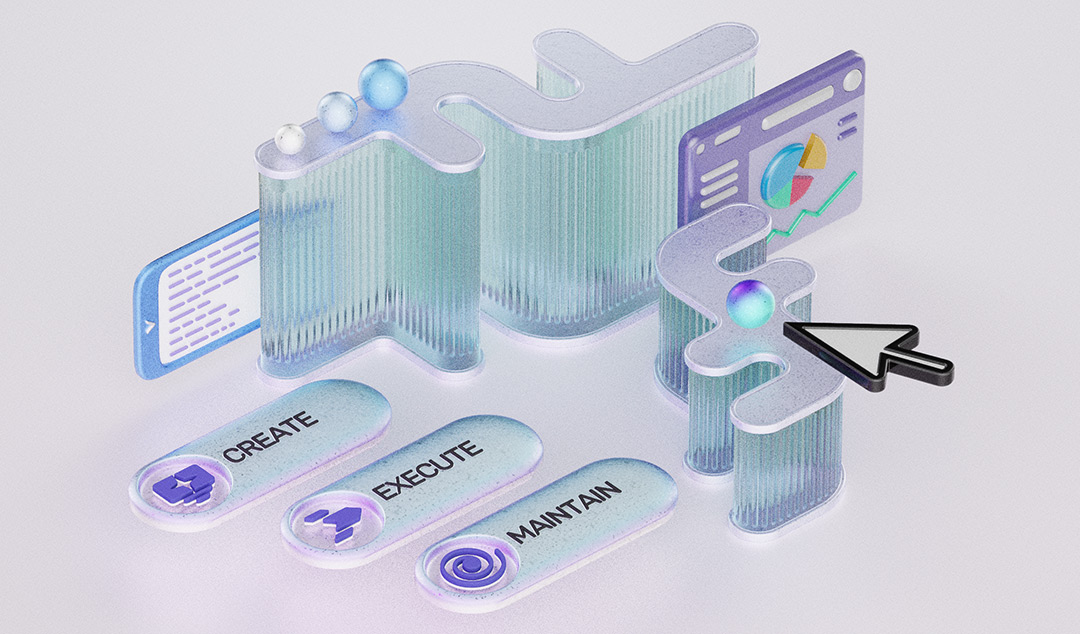Why Purpose-Built AI Models Outperform Frontier Models in Testing
Discover why purpose-built AI models outperform generalized frontier models in QA testing, delivering superior accuracy and reduced maintenance overhead.

TL;DR
- Generalized AI models as applied to testing have limitations, derived from lack of specificity in training, and context
- Testing specific AI models, are generally more effective due their ability to tune in to testing specific testing data, multi model integration and adaptive learning mechanisms, related to test scenario execution
- The success rates for testing specific AI models is about 90%, as opposed to frontier models which generally succeed at about 60%
- Adopting specific testing models leads to a brighter future, where models are evolved enough to continuously learn and evolve cross-team collaboration in testing
Quality assurance leaders face a critical decision that will shape their testing strategy for years to come. As AI transforms software testing, the question isn't whether to adopt AI—it's which type of AI will deliver the results your team needs.
Two distinct approaches have emerged: generalized frontier models that promise broad capabilities across domains, and specialized AI models purpose-built for testing environments. While frontier models capture headlines with their impressive general knowledge, the reality for testing teams is more nuanced. Testing requires precision, reliability, and deep understanding of application behavior, qualities that demand specialized intelligence.
The stakes couldn't be higher. testing teams currently consume 30-50% of engineering budgets while struggling with brittle test scripts, maintenance overhead, and coverage gaps. The AI approach you choose will determine whether your teams break free from these limitations or simply automate existing problems at scale.
The Fundamental Limitations of Generalized AI in Testing
Frontier models excel at broad reasoning tasks, but specialized domains like testing expose their limitations. These models face three critical challenges that impact testing effectiveness.
- Surface-Level Application Understanding
Frontier models process applications as generic interfaces rather than understanding the underlying business logic and user workflows. When testing an e-commerce checkout flow, a generalized model might identify form fields and buttons, but it lacks the domain knowledge to recognize revenue-critical paths, validate business rules, or understand the implications of different user states.
- Inconsistent Element Recognition
Web applications constantly evolve, with dynamic content, A/B tests, and responsive layouts creating variability that confuses generalized models. A frontier model might successfully identify a "Submit" button in one context but fail when that same button appears with slightly different styling or positioning. This inconsistency compounds across test suites, creating maintenance nightmares.
- Generic Test Strategy Application
Frontier models apply broad testing principles without understanding application-specific risk factors. They might generate comprehensive test coverage for low-risk features while missing critical edge cases in payment processing or user authentication—areas where failures have severe business impact.
Understanding Model Specialization Advantages
Purpose-built testing models operate from fundamentally different assumptions about what effective testing requires. These specialized systems are trained specifically on application testing scenarios, user interaction patterns, and quality assurance best practices.
Specialized models learn from millions of real-world testing scenarios, understanding how applications behave under different conditions. This training includes edge cases, error states, and recovery patterns that general models simply haven't encountered. When a specialized model encounters a login form, it brings knowledge of authentication flows, security validation, and user experience patterns specific to that context.
Testing-specific models are architected for the reliability and predictability that testing teams demand. Rather than optimizing for creative output or conversational ability, these models prioritize consistent element identification, deterministic test execution, and reliable failure detection. This architectural focus delivers the stability that production testing environments require.
Purpose-built models understand testing within the broader context of software delivery. They recognize that different application areas carry different risk profiles, that certain user paths generate more revenue, and that timing constraints affect test prioritization. This contextual awareness enables intelligent decision-making that aligns with business objectives.
Technical Architecture Deep Dive
The technical differences between frontier and specialized models become apparent when examining their underlying architectures and data foundations.
Training Data Specialization
Specialized testing models are trained on curated datasets that include application behavior patterns, UI element classifications, and test execution outcomes. This training data encompasses real-world scenarios like network latency impacts, browser compatibility issues, and device-specific behaviors that affect test reliability.
The data foundation also includes failure pattern recognition, enabling models to distinguish between application bugs, environmental issues, and test script problems. This distinction is crucial for reducing false positives and ensuring that QA teams focus on genuine quality issues.
Multi-Model Integration Strategy
Effective testing AI combines multiple specialized models working in concert. Computer vision models handle visual element recognition and UI change detection. Natural language processing models interpret test requirements and user stories. Machine learning models analyze execution patterns to optimize test prioritization and resource allocation.
This layered approach allows each component to excel in its specialized domain while contributing to an integrated testing solution. The computer vision layer might detect UI changes, the NLP layer interprets the business impact, and the ML layer determines appropriate test adjustments.
Adaptive Learning Mechanisms
Purpose-built models incorporate feedback loops that enable continuous improvement based on testing outcomes. When a test fails due to an application change, the model learns from that failure to improve future element recognition. This adaptive capability ensures that the AI becomes more effective over time, reducing maintenance overhead and improving test reliability.
Performance Analysis: Specialized vs. Frontier Models
Real-world performance data reveals significant differences between generalized and specialized approaches to testing AI.
Element Identification Reliability
Specialized models achieve 95%+ accuracy in element identification across different browsers and devices, compared to 70-80% for frontier models adapted to testing tasks*. This difference stems from training on testing-specific scenarios and optimization for consistent UI element recognition.
The reliability advantage becomes more pronounced in complex applications with dynamic content. Specialized models maintain accuracy even when dealing with single-page applications and progressive web apps, designs that challenge generalized approaches.
Test Execution Success Rates
Organizations implementing purpose-built testing AI report test execution success rates of 90%+ compared to 60-70% for frontier model implementations. This improvement reduces the manual intervention required to maintain test suites and increases confidence in automated testing outcomes.
Maintenance Reduction Metrics
Specialized models demonstrate 70%** reduction in test maintenance compared to traditional scripted approaches, while frontier model implementations typically achieve only 40-50% reduction. The difference lies in the specialized model's ability to understand application context and adapt to changes intelligently.
Integration and Implementation Considerations
Successful AI testing implementation requires careful consideration of technical integration requirements and organizational readiness factors.
Development Environment Compatibility
Purpose-built testing platforms typically offer sophisticated APIs designed for seamless integration with existing development workflows. These integrations support popular CI/CD tools, test management systems, and defect tracking platforms, enabling organizations to enhance their current processes rather than replacing entire toolchains.
Scaling and Resource Management
Specialized testing AI platforms leverage cloud-native architectures that provide elastic scaling capabilities. This approach enables organizations to handle variable testing loads efficiently, scaling up for major releases and scaling down during maintenance periods without maintaining unused infrastructure.
Change Management Requirements
Implementing specialized AI requires different change management approaches than frontier model adoption. Teams need training on AI-augmented testing workflows rather than learning to prompt general-purpose models. This focused training typically requires less time investment while delivering more predictable outcomes.
The Future of Testing Intelligence
The evolution of AI in testing points toward increasingly sophisticated specialized models that understand not just applications, but entire software delivery ecosystems.
Continuous Learning Integration
Next-generation testing AI will incorporate real-time feedback from production monitoring, user behavior analytics, and business performance metrics. This integration will enable testing strategies that align with actual user impact and business outcomes, moving beyond traditional coverage metrics.
Cross-Team Collaboration Enhancement
Specialized models are evolving to bridge the gap between product management, development, and testing teams. Future implementations will automatically translate business requirements into test scenarios, enabling product managers to define quality criteria directly without requiring technical translation.
Choosing Purpose-Built Intelligence for QA Excellence
The evidence overwhelmingly supports specialized AI models for organizations serious about transforming their quality assurance capabilities. While frontier models offer impressive general capabilities, testing demands the precision, reliability, and domain expertise that only purpose-built solutions deliver.
Organizations implementing specialized testing AI report dramatic improvements: test maintenance reductions of 70%, defect detection improvements of 60%, and overall QA cost reductions from 30% to 10% of engineering budgets. These results stem from AI systems designed specifically for testing challenges rather than adapted from general-purpose models.
The choice between frontier and specialized models ultimately determines whether your organization achieves incremental improvements or fundamental transformation. Purpose-built testing intelligence doesn't just automate existing processes—it reimagines what's possible when AI truly understands the domain it serves.
Reference:
*https://kpidepot.com/kpi/automated-test-success-rate
** Mineral Reduces Test Maintenance by 70% With Functionize
** How a Global Electronics Retailer Transformed QA with Functionize
** Interview: GE Healthcare's Testing Transformation with Functionize











